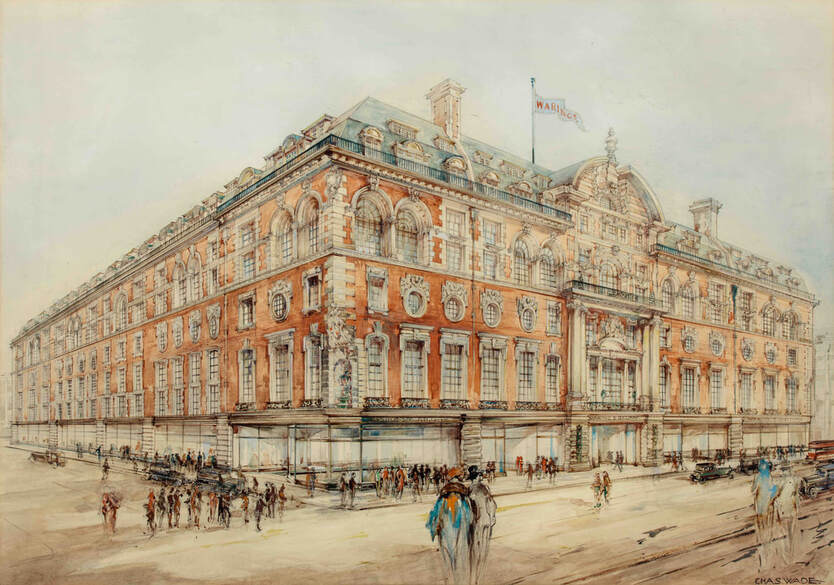|
Charles Wade 1883–1956
Waring & Gillow, Oxford Street c.1906 Watercolour, pen and ink 26 × 37 inches (66 × 94 cm) Signed Waring & Gillow was the non plus ultra of early twentieth-century furniture makers, lavishly fitting out private houses, hotels, clubs, and ocean liners. In 1906, the firm erected a huge store on Oxford Street. Only Selfridges, completed a few years later, can compete in terms of retail architectural splendour. The façade is a riotous recreation of Hampton Court Baroque (a revivalist style known as “Wrenaissance”): it features the full range of swags, festoons, cornucopia, broken pediments and individual carving. The upper storey corners are conceived as elaborate prows of ships. Like Selfridges, the building is too good for its setting, only being visible obliquely, while requiring a country-house-drive approach to take in its frontal glory. The interior was reworked in the 1970s, while the façade was retained. Wade was an architect, technical draughtsman, artist, and poet. He designed several houses at Hampstead Garden Suburb, and was much in demand for his architectural drawings. He illustrated Raymond Unwin’s Town Planning in Practice (1909), a book which had a huge influence worldwide. Wade’s artistic endeavours were short-lived, as he received a large inheritance in 1911. He thenceforth became a passionate collector, and devoted himself to the care and upkeep of Snowshill Manor, Gloucestershire, his own home which he gave to the National Trust in 1951. |
Proudly powered by Weebly

